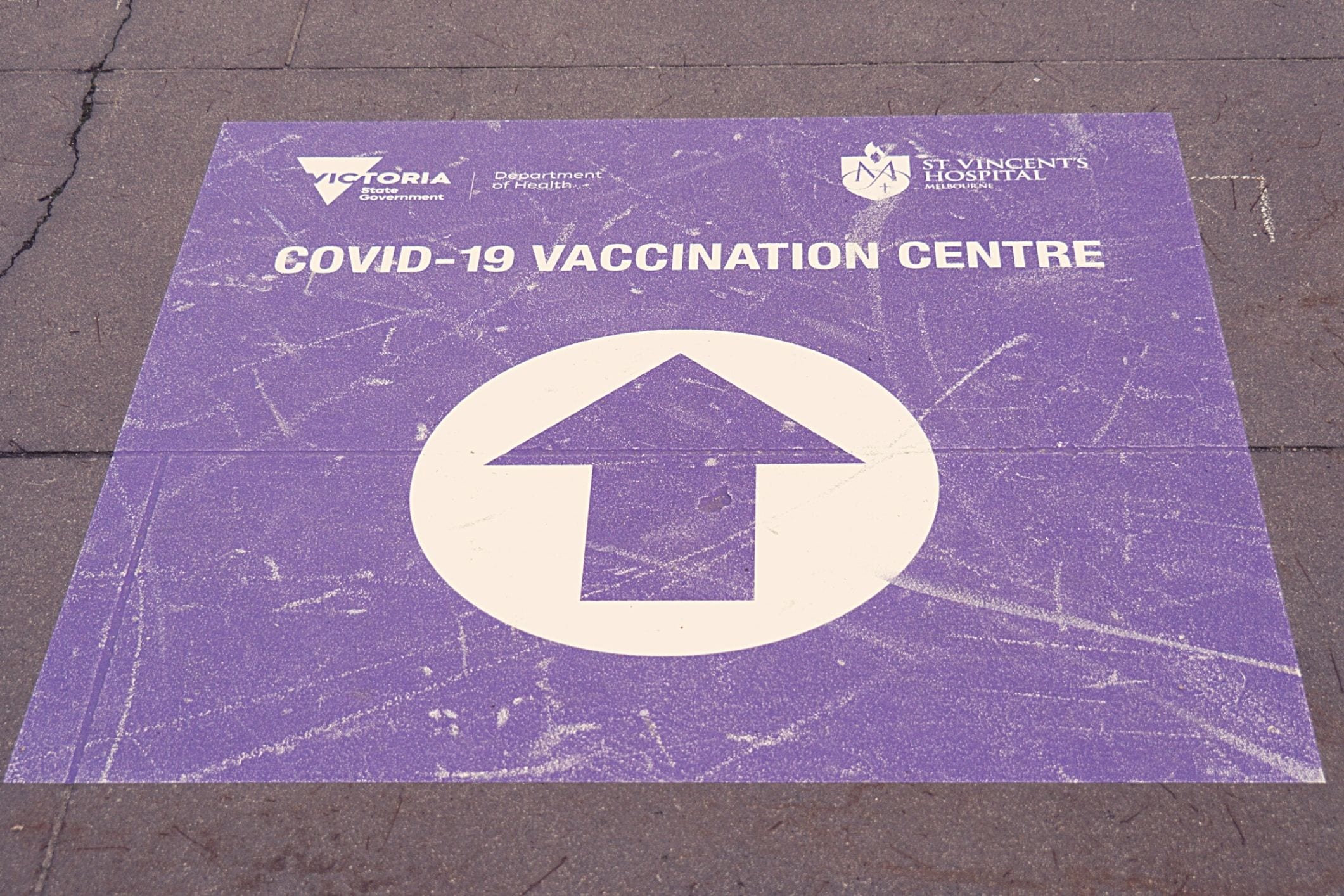
Some states and territories had already opened up their rollout to under 50s, including Victoria, which invited 40 to 49-year-olds to come forward from late May in light of the current outbreak. In the Northern Territory, everyone aged over 16 is now eligible, while in Western Australia, adults over 30 will be eligible from June 10.
Most Australians under 50 will receive the Pfizer vaccine, which is the preferred COVID vaccine for people in this age group. This is based on advice from Australia’s Technical Advisory Group on Immunisation around the risk of rare blood clotting disorders following the AstraZeneca vaccine.
To this point, we’ve been quite fixated on the side effects and small risks associated with the AstraZeneca vaccine. But with many Australians now lining up for the Pfizer shot, let’s take a look at what we know about side effects and rare adverse events after this vaccine.
In Australia, the Pfizer vaccine is registered for use in people over 16. Two doses are needed, with a gap of at least three weeks between doses.
This vaccine has now been administered to many millions of people around the world. We know a lot about its safety from both clinical trials and safety surveillance programs in the community.
AusVaxSafety has been collecting and regularly updating vaccine safety data from Australians who have received a COVID vaccine, either Pfizer or AstraZeneca.
As of May 30, more than 245,000 people had responded to text message or email questionnaires on side effects after their first dose of the Pfizer vaccine, and over 140,000 people had responded after dose two.
Close to two-thirds of people reported no reactions after the first dose, and 40% reported no reactions after the second.
The most common side effects include headache, muscle aches and fatigue, and these are more common after dose two compared to dose one.
These sorts of side effects are very similar to those reported in clinical trials and what’s been set out in the Pfizer vaccine’s product information. They occur because our immune system is responding to the vaccine.
Side effects will usually present in the first 24-48 hours after vaccination. We know from AusVaxSafety surveillance and safety data from overseas they usually last less than two to three days, and nearly everyone who experiences side effects is back to normal one week after vaccination.
You can manage symptoms such as pain or fever with medicines like paracetamol or ibuprofen. But if your symptoms persist or get worse, you should see your GP.
There have been reports of anaphylaxis after the Pfizer vaccine. Anaphylaxis is an acute allergic reaction where people experience a rash, lip and tongue swelling, trouble breathing and sometimes shock (low blood pressure and fast heart rate).
Overall, it’s estimated anaphylaxis occurs in approximately five people per million doses of the Pfizer vaccine administered. Anaphylaxis nearly always happens in the first 15 minutes to half-hour after vaccination, which is why people are asked to wait in the clinic after receiving a COVID-19 vaccine.
Anaphylaxis is easily treated (reversed) with an injection of adrenaline by nursing and medical staff at the vaccination centres, and people affected generally make a complete recovery.
If you happen to have had an acute allergic reaction after vaccination, it’s important you tell your doctor before getting a second dose of the same vaccine. You may be referred for a specialist allergy consultation.
Recently there have been reports from overseas, including the United States and Israel, of myocarditis (heart inflammation) and pericarditis (inflammation of the lining of the heart) following vaccination with the Pfizer vaccine.
The US Centers for Disease Control notes these cases have been mostly in younger males (aged 16 years and older), usually appear within several days of vaccination, and are more common after the second dose.
However, no casual link has been formally established. It’s important to note heart inflammation can be caused by many factors. These include infections, particularly from viruses or bacteria; or damage to the heart’s tissue or muscle as a result of autoimmune diseases, medicines, environmental factors, or other triggers, including, rarely, vaccines.
The COVID-19 subcommittee of the WHO Global Advisory Committee on Vaccine Safety is also reviewing this issue. They have noted that in most of the reported cases, the people have recovered.
Australia’s Therapeutic Goods Administration, meanwhile, is continuing to monitor myocarditis and pericarditis as “adverse events of special interest”.
Rigorous studies where we compare the number of myocarditis cases in vaccinated and unvaccinated populations are underway in countries such as Israel, the United Kingdom and the United States to assess whether there is any link between myocarditis and the Pfizer vaccine.
But at this stage, there’s no significant cause for concern.
Real-world studies are showing the Pfizer vaccine has clear benefits in reducing deaths and hospitalisations due to COVID-19.
As we’re seeing right now in Victoria, community outbreaks continue to pose a significant risk. Our path out of this pandemic relies on a high uptake of vaccines, and use of the highly effective Pfizer vaccine is key.
Nicholas Wood, Associate Professor, Discipline of Childhood and Adolescent Health, University of Sydney
This article is republished from The Conversation under a Creative Commons license. Read the original article.
Are they tracking heart attacks from heart inflammation?
hello
I had a stroke in Jan this year . I am 77 and would prefer the pfizer vaccine. Is this possible . I live in Mullumbimby NSW.
Regards Malcolm
I’ve had 2x Pfizer. I’m 57, work in Aged Care. No side effects experienced